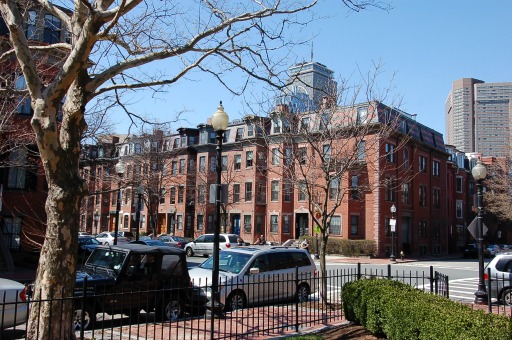Anyone who lives in or visits Boston can’t help but notice one thing: almost every corner seems under construction. With cranes and work-in-progress steel structures seemingly everywhere that you look, the city is teeming with development.
A recent story in The Boston Globe reported that Boston’s current “building spree” has become historic, stating that its “enormity, pace, and geographic sweep are redefining the skyline faster than any period since the early Industrial Age.” The article identifies the Seaport District, the South End, North Station, and Dudley Square as neighborhoods that are experiencing some of the most rapid transformation.
Boston real estate agent David Bates recently referred to these sweeping changes as the “Boston real estate Kool-Aid,” noting that Boston real estate is undergoing a renaissance period. “Companies are coming, people are coming, families are staying and innovators are innovating,” Bates wrote in Curbed.
Here are some recent stats that reveal just how much Boston’s population, housing market, and businesses are on the rise:
- In 2014, World Population Review reported that Boston’s population rose nearly 2% (adding nearly 30,000 people to reach about 646,000) in 2013 from its last recorded population in 2010—more growth than the city experienced in the eighties and nineties combined.
- The Greater Boston area is home to around 4.5 million people, which makes it the 10th-largest metro area in the U.S.
- At the end of 2014, 14.6 million square feet of new buildings were on the rise across the city of Boston.
- Boston is gradually developing a taller skyline with five proposed towers of more than 600 feet, defying a 19th-century zoning code with height limits of 80-120 feet.
- An unprecedented amount of new housing construction is underway in Boston, with 72 projects in progress, nearly 70% of which are residential buildings.
- By 2018, about 8,000 new apartments are expected to be completed in Boston. This doubles the number built in large luxury buildings since the sixties.
- The median selling price of condos rose to $619,000 in downtown Boston in 2014, up 12% over the previous year.
- In the first 10 months of 2014, a survey conducted by Bates found that about 60% of Boston-based condos sold for at least their asking price, with buyers paying at least 1% above list price on close to half (43%) of these sales. One in five buyers surveyed paid at least 5% over the asking price, and one in 10 paid at least 10% over ask.
- Foreign investment in commercial properties in Boston rose to $10.4 billion in 2014—more than doubling since 2013—ranking Boston sixth in the world in funds attracted from foreign sources.
Bates sums up how this total picture of Boston’s boom will affect real estate in 2015: “New neighborhoods will be created and old neighborhoods will be transformed; some commercial areas will become much more residential and some residential areas will become much more commercial. The skyline will grow and the infrastructure beneath will be improved. Retail, restaurants, pharmacies and supermarkets will arrive in their new city locations.” Boston Globe staff writer Casey Ross adds that “With our health care and academic institutions, we have a very compelling story to tell. I think we have a strong outlook for the next 10 years.”
More Housing Opportunities in Boston
Thinking about how to take advantage of this growing real estate market? You don’t have to decide today how you want to invest in Boston’s thriving real estate market. Get to know the city first! Start with short-term apartments in Boston and discover its most promising neighborhoods. Call Furnished Quarters at 800-255-8117 to learn more about your options.








